 August 22, 2018 John E. Ross, KD8IDJ, Editor
| ||||||
ARRL Headquarters Monitoring Progress of Hurricane Lane ARRL Headquarters is in monitoring mode, as Hurricane Lane approaches Hawaii, ARRL Emergency Preparedness Manager Mike Corey, KI1U, said, and Ham Aid Amateur Radio equipment is available for deployment.
The ARRL Hawaii Section is engaged with Hawaii Voluntary Organizations Active in Disaster (VOAD) and on standby to assist with shelter operations, if necessary. Volunteers are also assisting the National Weather Service and state emergency managers. At this time, no personnel or equipment are needed. Corey asked those in the affected area to alert ARRL of any communication issues that might evolve as well as any key information that could be shared via Amateur Radio networks. (This story was written at 1200 UTC and is still developing. Visit the ARRL website for updates.) ARRL Announces Director, Vice Director Candidates for Fall Election The ARRL Board of Directors' Ethics and Elections Committee has declared as eligible the candidates for the 2018 Board election cycle. Incumbent Directors in four ARRL Divisions face challengers, as does one Vice Director. Both chairs are open in the Northwestern Division.
In the Hudson Division, Director Mike Lisenco, N2YBB, faces a challenge from Ria Jairam, N2RJ. Vice Director Bill Hudzik, W2UDT, is unopposed for re-election. In the New England Division, Director Tom Frenaye, K1KI, is being challenged for re-election by Fred Hopengarten, K1VR. Vice Director Mike Raisbeck, K1TWF, has no opposition for re-election. In the Roanoke Division, the incumbent Director and Vice Director face challengers. Director James Boehner, N2ZZ, is being opposed for re-election by George Hippisley, W2RU, while incumbent Vice Director Bill Morine, N2COP, will be facing off against John Humphrey, W4IM, to retain his seat. In the Northwestern Division, both the Director's and Vice Director's chairs are up for grabs, as incumbent Jim Pace, K7CEX, has opted not to seek a new term on the Board. Incumbent Vice Director Bonnie Altus, AB7ZQ, is in a three-way race for the Director's seat. The other two candidates are Horace Hamby, N7DRW, and Mike Ritz, W7VO. A three-way race also exists for the Vice Director's seat that Altus is vacating in order to run for Director. The candidates are Delvin Bunton, NS7U; Daniel Stevens, KL7WM, and Mark Tharp, KB7HDX. Concern Rising within Amateur Radio Community over WWV Shutdown Proposal ARRL members and Amateur Radio clubs are expressing increased concern over the inclusion of WWV and WWVH on a list of proposed cuts in the White House's National Institute of Standards and Technology (NIST) Fiscal Year 2019 budget request. The proposed cuts, which only recently came to light, would also include the Atomic Clock signal from WWVB. Online petitions soliciting signatures include one established by Tom Kelly II, W7NSS, of Portland, Oregon, who would like to see funding for the stations maintained. The decision is up to Congress. "It is important to note that no changes to NIST services have occurred, and if the proposal were to be implemented, public notice would be provided," NIST said this week.
According to the NIST Fiscal Year (FY) 2019 budget request, the specific cut would come from the NIST Fundamental Measurement, Quantum Science, and Measurement Dissemination budget and would amount to $6.3 million. "NIST has a long-standing history of providing time and frequency services through our radio stations and we appreciate that many people use these services," NIST said in a statement. "WWV is the longest continuously operating radio service in the US. At the same time, the proposed NIST budget for FY 2019 required difficult choices about budget priorities." NIST said that it plans to eliminate "efforts that have been replaced by newer technologies, measurement science research that lies outside NIST's core mission space, and programs that can no longer be supported due to facility deterioration."
WWV and WWVH broadcast 24/7. Announcements include time announcements, standard time intervals, standard frequencies, UT1 time corrections, a BCD time code, geophysical alerts, and marine storm warnings. Transmissions are broadcast from separate transmitters on 5, 10, 15, and 20 MHz. An experimental 25 MHz signal is also currently on the air. WWVB transmits standard Coordinated Universal Time (UTC) signals on 60 kHz to appropriately equipped devices. Read more. Kerala, India, Flooding: Radio Amateurs Assisted Rescue Operations Radio amateurs in the flood-stricken Indian state of Kerala helped with rescue operations there, in part by tracing stranded people through their last mobile phone locations and sharing information with officials. Most telecommunication services in Kerala remain down. Accounts vary, but some 120 hams -- and perhaps as many as 300 -- were involved in supporting official rescue operations.
Wilson said he coordinated the statewide Amateur Radio response, which was managed by individuals without the involvement of any ham radio organization in India. "Hams gathered at the Thiruvananthapuram District Administration office, where the District Emergency Operations Centre is functioning, and set up an Amateur Radio emergency communication control center to work with the District Disaster Management Authority to support rescue and relief operations," Wilson said, adding that hams from all over Kerala have been relaying reports of people stranded or in need of medical aid. "So far, hams have reported the location and other details of more than 15,000 victims stranded on roofs of houses and other buildings as floodwaters rose to the second floor of buildings." "At the control centre, we received messages relayed from other parts of the state and took further actions that resulted in the rescue of over 1,800 people," Wilson said. "In many cases, the first information was relayed by hams, before any other agency did." Earthquake Hits Venezuela, Net Activates A magnitude 7.3 earthquake hit northern Venezuela on August 21 at 21:32 UTC, some 12 miles north-northwest of Yaguaraparo. The YV5RNE National Emergency Network of the Radio Club Venezolano activated on 7.088 MHz in the immediate aftermath. The US Coast and Geological Survey (USGS) said the quake occurred at a depth of 76.5 miles. It was felt as far away as Caracas, some 300 miles to the west, but caused no casualties or major damage because of its depth.
The Doctor Will See You Now! "Dummy Loads" is the topic of the current (August 16) episode of the "ARRL The Doctor is In" podcast. Listen...and learn!
Every 2 weeks, your host, QST Editor-in-Chief Steve Ford, WB8IMY, and the Doctor himself, Joel Hallas, W1ZR, will discuss a broad range of technical topics. You can also email your questions to doctor@arrl.org, and the Doctor may answer them in a future podcast. Enjoy "ARRL The Doctor is In" on Apple iTunes, or by using your iPhone or iPad podcast app (just search for "ARRL The Doctor is In"). You can also listen online at Blubrry, or at Stitcher (free registration required, or browse the site as a guest) and through the free Stitcher app for iOS, Kindle, or Android devices. If you've never listened to a podcast before, download our beginner's guide. Just ahead: "Antennas and Wind." Summer Section Manager Election Results Announced Two incumbent ARRL Section Managers have been declared re-elected in balloted elections this summer, and two new Section Managers will begin initial terms of office on October 1. Ballots were counted on Tuesday, August 21, at ARRL Headquarters. In addition, six other incumbent Section Managers were unopposed and will continue with new terms of office.
In Western New York, incumbent Section Manager Laura Mueller, N2LJM, was re-elected, receiving 500 votes to 250 for challenger Elliott Blauvelt, Jr., N2OJM. Mueller, of Falconer, has led the Western New York Field Organization since 2014. She will begin her third term of office this fall. In Eastern Pennsylvania, George Miller, W3GWM, of Wyalusing, will become the new Section Manager on October 1, filling an 18-month term of office. Miller, who has been the Section Traffic Manager, was the only nominee when nominations were re-solicited this past spring. Bob Wiseman, WB3W, who has been the Eastern Pennsylvania Section Manager since October 2016, decided not to run for a new term, but he continued serving as SM for an additional 6 months after his regular term had concluded at the end of March. Southern Florida will welcome Barry Porter, KB1PA, as its new Section Manager on October 1. Porter, of Delray Beach, has been an Assistant Section Manager, Assistant Section Emergency Coordinator, and Emergency Coordinator. He was the only nominee for the position after Jeff Beals, WA4AW, announced that he would not seek a new term of office after serving since 2014. These incumbent Section Managers ran unopposed and will begin new 2-year terms of office in October: Chuck Motes, K1DFS (Connecticut); Skip Jackson, KS0J (Minnesota); Scott Yonally, N8SY (Ohio); Kevin O'Dell, N0IRW (Oklahoma); Oscar Resto, KP4RF (Puerto Rico), and Fred Kleber, K9VV (Virgin Islands). Consent Decree Settles FCC Noncompliant Drone Transmitters Marketing Case The FCC Enforcement Bureau has entered into a Consent Decree with Horizon Hobby, LLC to resolve a case involving the marketing and sale of noncompliant audio/video (A/V) transmitters intended for use on drones. The Consent Decree was attached to an FCC Order released on August 16. The Enforcement Bureau said the transmitters violated the FCC's equipment marketing and Amateur Radio rules.
In the Consent Decree, Horizon Hobby concedes that it marketed A/V transmitters that did not comply with FCC equipment marketing rules. The company has agreed to implement a compliance plan and to pay a $35,000 civil penalty. Read more. US Coast Guard Warns of LED Lighting Interference to Marine Radios, AIS Reception The US Coast Guard says it's received reports from crews, ship owners, inspectors, and other mariners regarding poor reception on VHF radiotelephone, digital selective calling (DSC), and automatic identification systems (AIS) when in the vicinity of LED lighting systems. This could include interior and exterior lighting, navigation lights, searchlights, and floodlights found on vessels of all sizes.
ARRL has determined a wide range of interference-causing potential from consumer lighting devices. "While some are relatively quiet, other devices -- even those that meet the required FCC emissions limits -- can still cause harmful interference," said ARRL Electromagnetic Compatibility Engineer Mike Gruber, W1MG. "My best recommendation is to try LED lights before you buy, especially if there is a possibility that the device will be used while you're operating. Once you have determined that a particular LED device is quiet, then purchase as many as you need from that same store." Over the past few years, ARRL has provided the FCC with reports of LED and other lighting systems that are not in compliance with FCC regulations. In several instances, these devices greatly exceeded the FCC's emissions limits, in one case by as much as 58 dB, creating as much noise as 650,000 legal devices, Gruber said. "Several recent FCC enforcement actions involving LED manufacturers have been encouraging," he added. "These actions can and will make a difference." Gruber said ARRL remains committed to working with both the FCC and manufacturers to help facilitate that positive difference in every possible way. "It is possible for LED and other lighting technologies to coexist with both amateurs and other users of the radio spectrum," he said. Read more. -- Thanks to gCaptain.com and Frank Smith, WS1MH Company Established by Inventor Nathan Cohen, W1YW, Advances Cloaking Technology Fractal Antenna Systems, Inc., established by noted radio amateur and inventor Nathan Cohen, W1YW, continues to stretch technological boundaries of belief. In an August 15 news release, the firm confirmed the issuance of its newest patents that will enable the next generation of stealth-like invisibility and absorptive shielding. The technology has both commercial and military applications. The firm pioneered and invented invisibility cloaks and holds both the "source" patent (8,253,639) and the related comprehensive intellectual property portfolio. Recently issued patent 10,027,033 is a continuation of that state-of-the-art innovation. It discloses a novel means of turning invisibility cloaks on and off, by changing the characteristics of a boundary layer.
"The person or sensor inside the cloak is thus no longer blind," Cohen said. He explained that not being able to sense the outside has previously been the top impediment to the use of invisibility cloaks. The newest patent (10,030,917) describes related technology, where electromagnetic energy is absorbed by fractal-based metamaterials. Called "fractal absorbers," the innovation uses evanescent waves to divert such impinging energy off to the sides, where it is absorbed in a resistive layer. Previously, absorbers relied on the thickness, not the width, of materials to accomplish this. Now, these very thin fractal absorbers accomplish the same result with dramatic reductions in thickness and weight.
He said his firm's new patent conclusively establishes fractal absorbers as an American invention that pre-dates anyone else's claims. Read more. -- Thanks to Business Wire for some information Shortwave Radio Reports May Offer Best Evidence of Amelia Earhart's Fate, Group Believes The International Group for Historic Aircraft Recovery (TIGHAR) believes it has the key to unlock the decades-old mystery of what happened to famed aviator Amelia Earhart and her navigator Fred Noonan in their planned circumnavigation of the globe in 1937. TIGHAR's The Earhart Project analyzed dozens of radio transmissions received by radio amateurs and other shortwave listeners during the frantic search to locate Earhart's plane when she did make her scheduled arrival at Howland Island. Many theories have sprung up over the years to explain the mysterious disappearance, but a TIGHAR research paper entitled The Post-Loss Radio Signals, published in July by The Earhart Project, maintains that "the patterns and relationships emerging from the data show that TIGHAR has answered the 81-year-old question: 'What really happened to Amelia Earhart?'"
The Earhart Project "is testing the hypothesis that Amelia Earhart and Fred Noonan landed, and eventually died, on Gardner Island, now Nikumaroro in the Republic of Kiribati," its website says. In July 1937, a young teenager named Betty Klenck, listening to shortwave bands on her family's radio, intercepted and transcribed pleas for help that TIGHAR calls "a remarkable record of perhaps the last communication" from Earhart and Noonan and "leave little doubt" that the 15-year-old heard a genuine distress call from the pair, transmitted from the aircraft Electra. Klenck's notebook, discovered in 2000, inspired TIGHAR's effort to catalog all reception reports. TIGHAR analyzed nearly 60 other reception reports made in the wake of Earhart's failure to arrive on Howland Island. The vast majority, TIGHAR said, came from government or commercial operators as well as "licensed amateurs" working for the US Interior Department on Howland and Baker Islands, listening on Earhart's primary, harmonically related frequencies of 3,105 and 6,210 kHz. TIGHAR contends that higher-order harmonics of the primary frequencies enabled the "accidental" reception of Earhart's transmissions at greater distances, because those higher-frequency signals would be more prone to ionospheric propagation. Reports came from the Pacific and the continental US, TIGHAR said, with Earhart reporting her plane down "on an uncharted island" that was "small, uninhabited." According to accounts, the radio transmissions became progressively more desperate, with Earhart reporting that Noonan was injured and subsequently delirious. The commander of the US Coast Guard vessel Itasca, which was involved in the search, discounted the contemporary radio reception reports, saying that all available land areas had been searched. He expressed doubt that Earhart and Noonan made any radio transmissions after their plane disappeared on July 2, 1937. Read more. In Brief...
The K7RA Solar Update Tad Cook, K7RA, Seattle, reports: The average daily sunspot number over the past week was 13, up from 3.4 during the prior week, but average daily solar flux declined from 68.7 to 67.5. The average daily planetary A index rose from 6.9 to 10.1, and average mid-latitude A index bumped up from 7.3 to 10.4.
Predicted planetary A index is 5, 10, 12, 8, and 12 on August 23-27; 8 on August 28-29; 5 on August 30 - September 2; 12 and 8 on September 3-4; 5 on September 5-10; 15 on September 11-12; 12 on September 13-14; 12, 18, 15, 12, and 10 on September 15-19; 8 on September 20-21; 5 on September 22-29; 15 and 10 on September 30 - October 1; 5 on October 2-3; 8 on October 4, and 5 on October 5-6. Sunspot numbers for August 16 - 22 were 12, 11, 11, 15, 15, 15, and 12, with a mean of 13. The 10.7-centimeter flux was 68.3, 67.3, 67.2, 66.8, 68, 67.8, and 66.9, with a mean of 67.5. Estimated planetary A indices were 11, 13, 12, 8, 14, 7, and 6, with a mean of 10.1. Estimated mid-latitude A indices were 11, 14, 11, 8, 15, 6, and 8, with a mean of 10.4. Send me your own reports or observations. Just Ahead in Radiosport
See the ARRL Contest Calendar for more information. For in-depth reporting on Amateur Radio contesting, subscribe to The ARRL Contest Update via your ARRL member profile email preferences. Upcoming ARRL Section, State, and Division Conventions
Find conventions and hamfests in your area.
. .
Subscribe to...
Free of charge to ARRL members...
| ||||||
.jpg) Corey said the Hurricane Watch Net (
Corey said the Hurricane Watch Net ( In the Central Division, Incumbent Director Kermit Carlson, W9XA, is being challenged for the seat by Valerie Hotzfeld, NV9L. Vice Director Carl Luetzelschwab, K9LA, is unopposed for re-election.
In the Central Division, Incumbent Director Kermit Carlson, W9XA, is being challenged for the seat by Valerie Hotzfeld, NV9L. Vice Director Carl Luetzelschwab, K9LA, is unopposed for re-election..JPG) ARRL is suggesting that members of the Amateur Radio community who value the stations for their precise time and frequency signals and other information sign the petition and/or contact their members of Congress promptly, explaining how the stations are important to them, beyond government and military use. WWV is among the oldest radio stations in the US and has broadcast the official time for nearly a century.
ARRL is suggesting that members of the Amateur Radio community who value the stations for their precise time and frequency signals and other information sign the petition and/or contact their members of Congress promptly, explaining how the stations are important to them, beyond government and military use. WWV is among the oldest radio stations in the US and has broadcast the official time for nearly a century.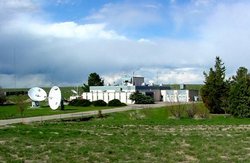
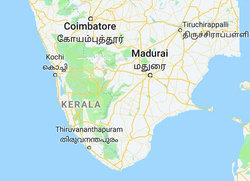 "Kerala has been hit by the worst flooding and landslides in 100 years, with six districts and neighboring areas submerged in 7 to 15 feet of water that has spilled over from nearby rivers," Suwil Wilson, VU2IT, told ARRL. "One million people are in relief camps, and more than 300 people are dead. Power and mobile communication in the affected areas are cut off."
"Kerala has been hit by the worst flooding and landslides in 100 years, with six districts and neighboring areas submerged in 7 to 15 feet of water that has spilled over from nearby rivers," Suwil Wilson, VU2IT, told ARRL. "One million people are in relief camps, and more than 300 people are dead. Power and mobile communication in the affected areas are cut off."-Map.JPG) Buildings in Caracas and elsewhere were evacuated after the powerful earthquake hit, sending shock waves as far west as Bogotá, Colombia, and as far east as Trinidad and Tobago. Jose Rafael Gomez, YV1GEC, who lives on Isla de Margarita, reported that the earthquake felt strong, but he said there had been no interruption of electric power or gas service. Roberto Rey, HK3CW, President of La Liga Colombiana de Radio Amadores, said the temblor was "very prolonged" in Bogotá. -- Thanks to IARU Region 2 Emergency Coordinator Cesar Pio Santos, HR2P, for some information
Buildings in Caracas and elsewhere were evacuated after the powerful earthquake hit, sending shock waves as far west as Bogotá, Colombia, and as far east as Trinidad and Tobago. Jose Rafael Gomez, YV1GEC, who lives on Isla de Margarita, reported that the earthquake felt strong, but he said there had been no interruption of electric power or gas service. Roberto Rey, HK3CW, President of La Liga Colombiana de Radio Amadores, said the temblor was "very prolonged" in Bogotá. -- Thanks to IARU Region 2 Emergency Coordinator Cesar Pio Santos, HR2P, for some information Sponsored by
Sponsored by 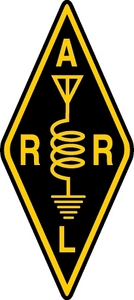 In North Dakota, incumbent Section Manager Nancy Yoshida, KG0YL, received 79 votes, and Dave Heintzleman, ND0CW, received 72 votes. Yoshida, of Thompson, will begin a full 2-year term on October 1. She had been appointed as Section Manager on January 1 to complete the term of Lynn Nelson, W0ND, after his election as Dakota Division Vice Director.
In North Dakota, incumbent Section Manager Nancy Yoshida, KG0YL, received 79 votes, and Dave Heintzleman, ND0CW, received 72 votes. Yoshida, of Thompson, will begin a full 2-year term on October 1. She had been appointed as Section Manager on January 1 to complete the term of Lynn Nelson, W0ND, after his election as Dakota Division Vice Director..jpg) "These laws ensure that radio frequency devices comply with the Commission's technical requirements and do not interfere with authorized communications," the Enforcement Bureau said. "Because the noncompliant A/V transmitters could operate in bands that are reserved for important operations, including Federal Aviation Administration Terminal Doppler Weather Radar, they must not be marketed or operated by anyone. Moreover, entities that rely on amateur frequencies in operating compliant A/V transmitters must have an amateur license and otherwise comply with all applicable laws for such operation."
"These laws ensure that radio frequency devices comply with the Commission's technical requirements and do not interfere with authorized communications," the Enforcement Bureau said. "Because the noncompliant A/V transmitters could operate in bands that are reserved for important operations, including Federal Aviation Administration Terminal Doppler Weather Radar, they must not be marketed or operated by anyone. Moreover, entities that rely on amateur frequencies in operating compliant A/V transmitters must have an amateur license and otherwise comply with all applicable laws for such operation."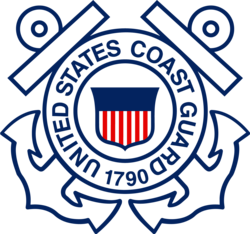 "Radio frequency interference caused by these LED lamps [was] found to create potential safety hazards," the Coast Guard said in an August 15
"Radio frequency interference caused by these LED lamps [was] found to create potential safety hazards," the Coast Guard said in an August 15 
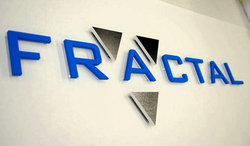 Fractal absorbers have been known and recognized as important for many years, and Cohen is quick to remind where the technology originated -- with ham radio. "Did you know they started with very modest circumstances on the ham bands with gear bought from the MIT ham radio flea market?" he asked. Cohen said he overcame a lot of negativity early on and now "hamming and fractals have led to a new evolution of the antenna art."
Fractal absorbers have been known and recognized as important for many years, and Cohen is quick to remind where the technology originated -- with ham radio. "Did you know they started with very modest circumstances on the ham bands with gear bought from the MIT ham radio flea market?" he asked. Cohen said he overcame a lot of negativity early on and now "hamming and fractals have led to a new evolution of the antenna art."
-from-website(1).jpg) The ARRL Contest Branch has announced a new
The ARRL Contest Branch has announced a new .jpg) The UN Amateur Radio Club's 4U1UN was back on the air briefly on August 22, after a lengthy absence. Following completion of antenna installation work, Adrian Ciuperca, KO8SCA, who has been helping to restore the station to operation, was on 20 meters for a short time (SSB only; a pirate was using the call sign on CW), generating a pileup and working about 2 dozen callers. Once all is in place, 4U1UN will operate from a remote operating position on the third floor of the UN Headquarters. 4U1UN is the 34th most-wanted DXCC entity. -- Thanks to
The UN Amateur Radio Club's 4U1UN was back on the air briefly on August 22, after a lengthy absence. Following completion of antenna installation work, Adrian Ciuperca, KO8SCA, who has been helping to restore the station to operation, was on 20 meters for a short time (SSB only; a pirate was using the call sign on CW), generating a pileup and working about 2 dozen callers. Once all is in place, 4U1UN will operate from a remote operating position on the third floor of the UN Headquarters. 4U1UN is the 34th most-wanted DXCC entity. -- Thanks to  Predicted solar flux is 68 on August 23-29; 67 on August 30; 66 on August 31 - September 5; 67 on September 6-10; 68 on September 11-15; 67 on September 16-19; 66 on September 20 - October 1, and 67 on October 2-6.
Predicted solar flux is 68 on August 23-29; 67 on August 30; 66 on August 31 - September 5; 67 on September 6-10; 68 on September 11-15; 67 on September 16-19; 66 on September 20 - October 1, and 67 on October 2-6.







